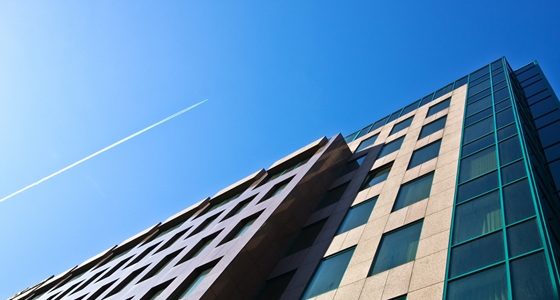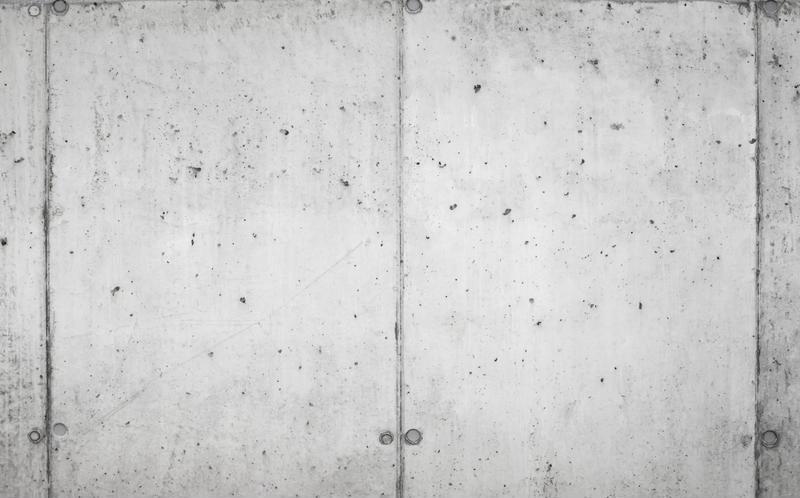
A few final lingering warm days aside, fall is well and truly upon us, and winter is coming sooner than many would like to admit. While this is great news for pumpkin-spice enthusiasts and winter sports fans, for building managers the changing seasons have their own implications in the form of maintenance operations.
Your building’s exterior isn’t a static, unchanging monolith. Weather conditions, such as precipitation, humidity and temperature can all affect the structural integrity of your facility’s facade. While repairing damage to your building can be an expensive affair, it’s possible to mitigate some of the seasonal wear and tear with clever maintenance operations. Here are a two areas to focus your efforts on as the seasons continue to change.
 Concrete is a popular material in building exteriors, but it still requires maintenance.
Concrete is a popular material in building exteriors, but it still requires maintenance.1. Concrete
Concrete is something of a miracle material, widely used in thousands of buildings across the country. While the material is inexpensive and relatively sturdy, it’s also prone to cracking, especially in the face of extreme temperature changes.
According to civil engineering site The Constructor, there are a number of factors that can contribute to cracks in a concrete facade. One of the most significant being the permeability of the concrete itself. You may not realize it, but not all concrete is composed of the same stuff – or at least, not in the same proportions. Differences in the ratio of water to cement, for example, can change how permeable concrete is. It’s a simple formula – the more permeable the concrete, the easier it is for water to seep in and crate cracks or other structural issues. Moreover, pollution in the air and rain, as well as mineral deposits from other materials, can leave unsightly stains on your concrete surfaces. While these typically don’t threaten the integrity of your structure, they certainly damage its aesthetic appeal.
Clean & Polish Building Solutions can help maintain and restore your concrete to its former glory. The trained experts can wash away these stains and seal your concrete to keep more from forming. As far as the cracks go, you may be able to repair small surface-level cracks yourself with commercial products. However, the constant shifting buildings do as a result of changing thermal conditions may make this a Sisyphean task. Moreover, if you notice large cracks running through the surface of a wall, it may be an indication of a more serious structural issue. Don’t try and tackle this job yourself – call in the pros from Clean & Polish to ensure the job is done right.
“The main thing to observe is your window’s U-value.”
2. Windows
Your building’s windows aren’t just there to let in pleasing natural light and afford your occupants a view of the outdoors – they are also an integral part of your facility’s heating solution in the winter. Not only can the windows themselves play a role in helping you keep climate-controlled air in and the elements out, but the surrounding frame that fits into the wall is also a major part of the equation, and you should pay close attention to both.
As for the windows themselves, check to see if your building is outfitted with energy-efficient options. The main thing to observe when assessing a window’s energy-efficiency is its U-value. According to Whole Building Design Guide, this is a measure of how well a window convects heat. For maintenance purposes, a higher U-value means that a window will let more heat escape, while low U-values tend to mean more energy-efficiency. The source noted that this value ranges from 1.3 on the high end to 0.2, which is closer to what you’d find on high-performance windows.
If you don’t have the budget to retrofit your building’s windows, you can explore other options, such as UV window films that you can apply to your existing fixtures. According to Buildings.com, the average window film yields a U-value of around 0.7, which means that your windows will reflect 30 percent of your building’s heat back into the interior.
As for the window frame, many different materials are used in the construction. Aluminum is among the most common due to its light weight, durability and relatively low cost. However, Efficient Windows Collaborative noted that aluminum frames have a much higher conductivity than those made of other materials, which means that these frames may raise your windows’ U-value.


